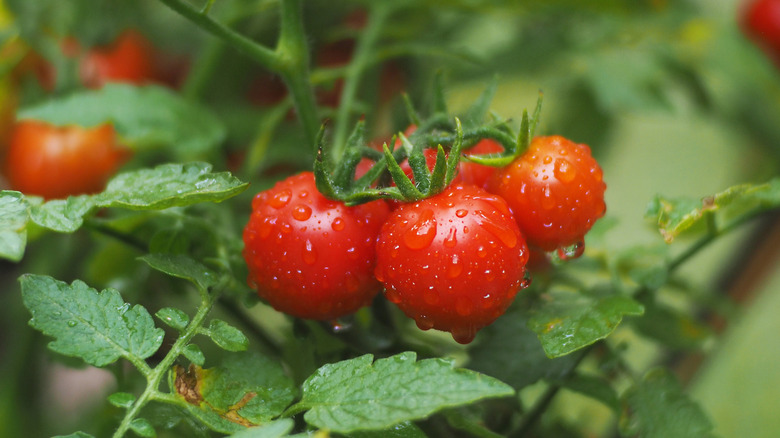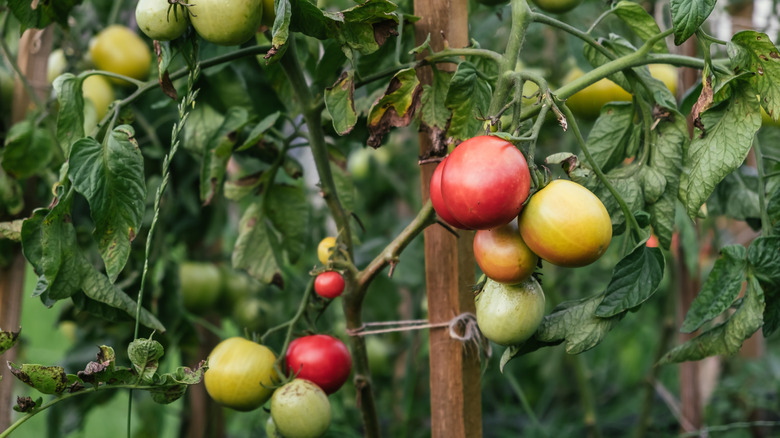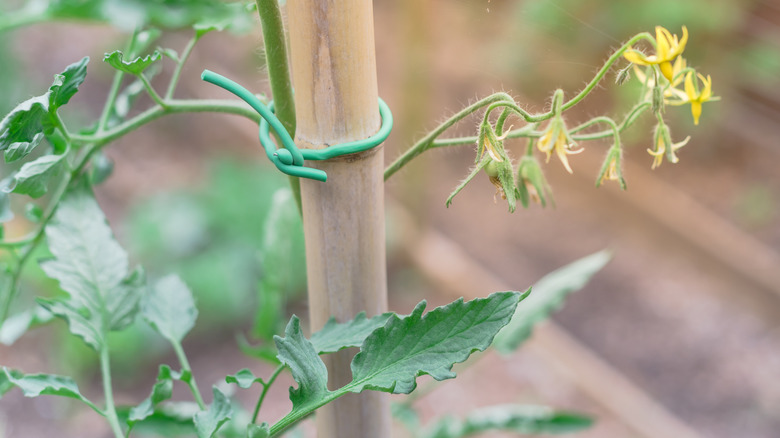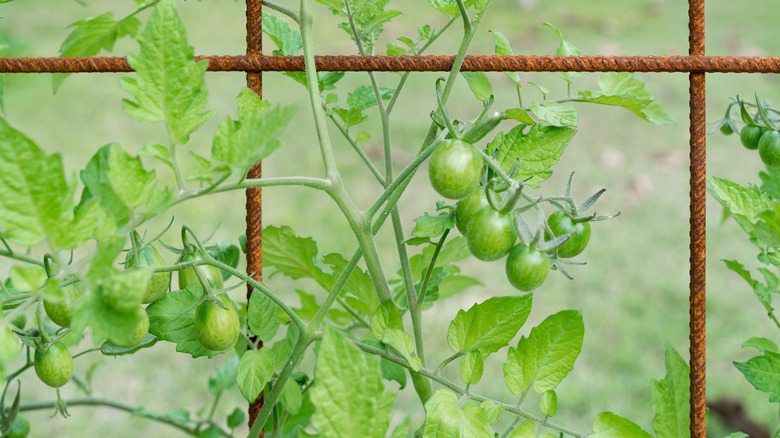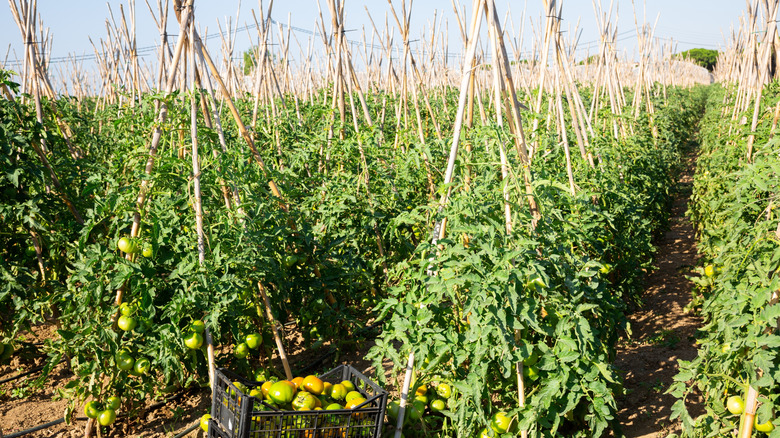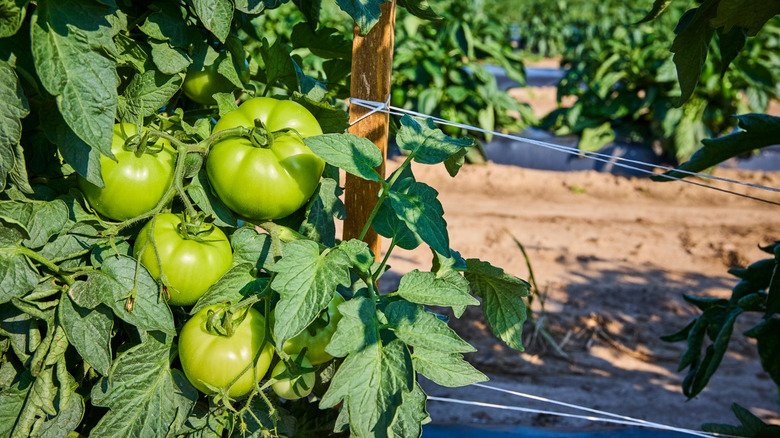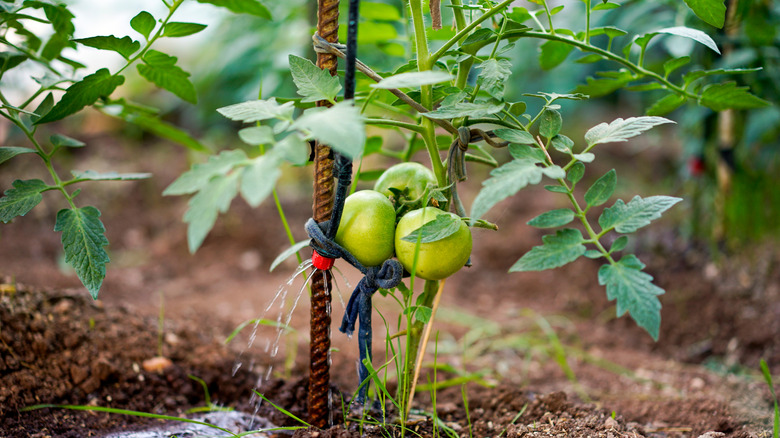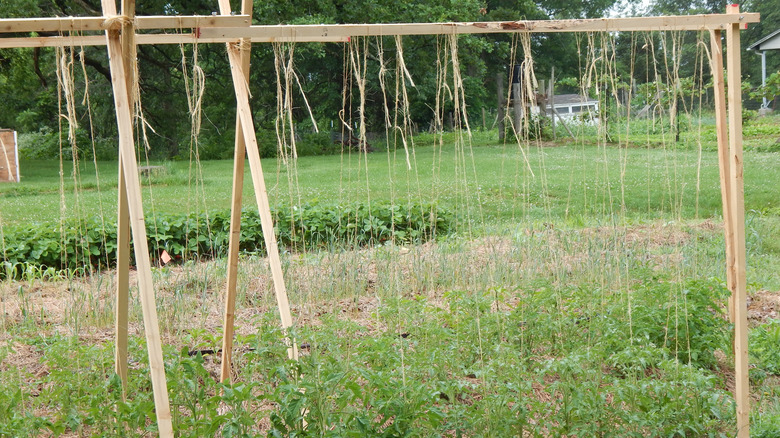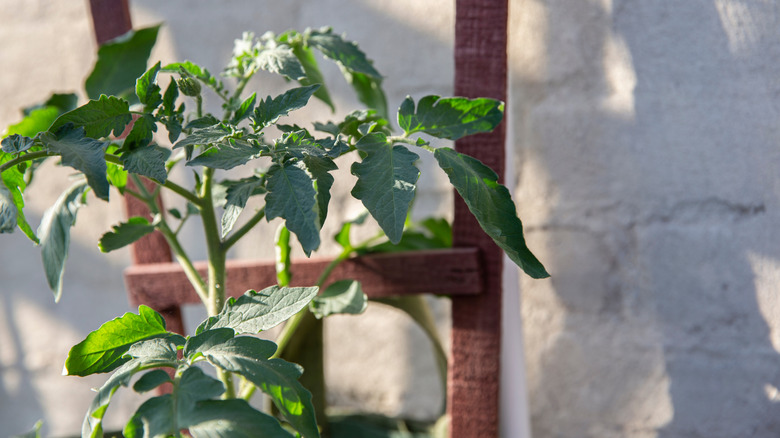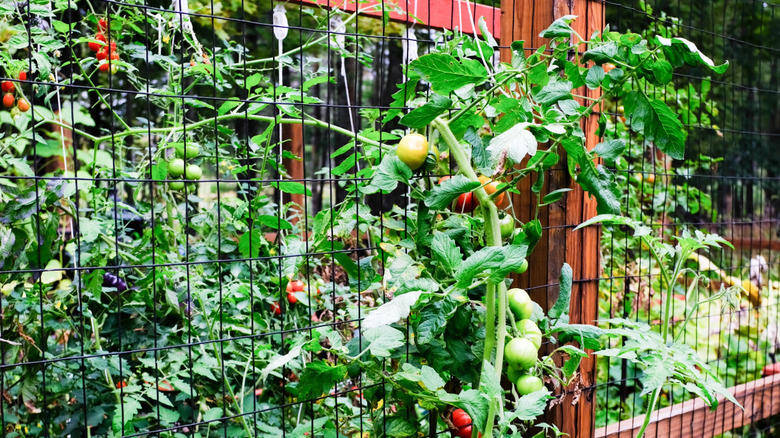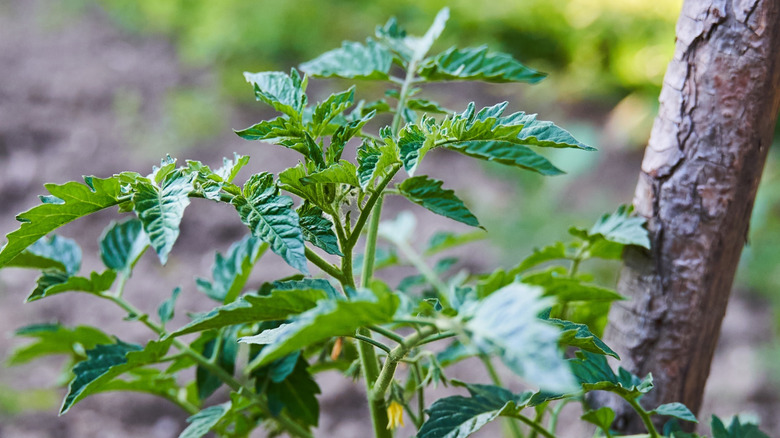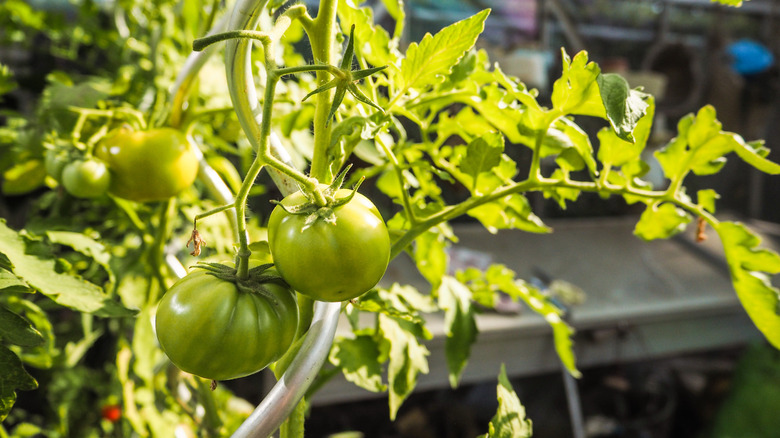Skip The Traditional Tomato Cage And Try These 13 Alternatives To Support Your Plants
While tomato cages have their uses, they aren't the only option for supporting everyone's favorite homegrown ingredient for making salsas, salads, and sauces. In fact, there are plenty of other solutions out there. Many gardeners are trying out alternatives, since there are some downsides to using tomato cages to support your plants, like limiting air circulation, which raises the risk of fungal and bacterial diseases.
Gardeners who decide they'd like to make the switch shouldn't cling to their old cages just because they're wary of being wasteful. There's no need to throw these support systems in the trash when there are many ways to repurpose tomato cages, such as using one as the structure for a DIY Christmas tree. But before deciding how to repurpose the cages, you need to decide on the specific alternative you'll employ to support your tomato plants. Thankfully, there are many different staking and trellising options you can consider.
Wooden stakes
Staking gives gardeners earlier harvests since the plants are exposed to more sunlight, and a common material for stakes is wood. When using wooden stakes, pick stakes that are at least 1 inch wide to provide adequate support. Tie the vine to the stake with a soft strip of cloth to avoid damaging the stems. A downside of wood stakes is that they are not as easy to sanitize from year to year. There is also a lot of work involved with this method, as the tomato plants must be continually pruned down to a central stem.
Bamboo trellises
Trellising is one of the best tomato cage alternatives since, by spreading the foliage out, plants get lots of sunlight, have excellent air circulation, and are easy to harvest. When using this method to give your plants support, lightweight and affordable bamboo poles make a good material for fashioning a DIY trellis. If you like this tomato cage alternative and are wondering how else you can use them in your garden, a bamboo trellis is also perfect for growing cucumbers.
Bamboo stakes
As a renewable resource, bamboo is many gardeners' material of choice for tomato supports, and it can be used for staking in addition to trellising. However, a single bamboo pole of the diameter typically sold for stakes may not be strong enough, so more than one pole may be needed per plant. With bamboo or other materials, you should stake tomatoes before they need the support, and don't forget to prune the suckers off the tomato plants to keep a central stem growing along the stake.
Metal trellises
Although staking individual plants has its advantages, using stakes is not as efficient if you're growing lots of tomato plants, so a trellis can be a better tomato cage alternative for some gardeners. A sturdy metal trellis fashioned from rebar or cattle panels can provide a longer-lasting choice in the garden. On the downside, this heavier material can be more difficult to move from place to place when rotating your vegetable garden crops.
Teepee trellises
For a more whimsical tomato cage alternative, four or more bamboo stakes can be used to create a teepee trellis. Gardeners need to secure the vines to the stakes to encourage them to grow on the teepee. You may be drawn to this option since a teepee trellis can help create a unique garden oasis in addition to providing support. Unless plants are pruned down to one leader per pole, the foliage inside the teepee can reduce air circulation, leading to fungal disease.
Florida weave
The Florida weave, TikTok's trellis-weaving technique, is yet another option, and this one works best for determinate tomato varieties. Also known as the basket weave or stake and weave method, stakes are pounded in at the ends of rows, and twine is woven around the plants to secure them, then attached to the posts. You can use biodegradable sisal twine to weave around the tomato plants to avoid getting stuck with plastic waste in the garden. This method requires gardeners to weave in additional levels of twine around plants as they grow.
Metal stakes
An advantage of a metal stake over a wooden one is that since metal isn't porous, these stakes are easier to clean, and pathogens can be avoided from year to year. Gardeners can use rebar or metal fence stakes, but should choose stakes that are as tall as possible to support the continual growth of indeterminate type tomato plants, which can reach over 7 feet tall. Generally, when using stakes as a support, they need to be pounded in at least 12 inches deep.
String trellises
For gardeners looking for a long-term system to install in their gardens, one genius way to trellis your tomato plants just uses string. With a string trellis, posts support an overhead beam or wire, and string is attached to the base of the tomato plant as well as the overhead support wire or beam. As the tomato plants grow, gardeners clip the stems to the string. As with the staking methods, plants need to be pruned regularly to remove suckers.
Wooden trellises
Similar to the bamboo and metal trellises already described, trellises to support tomato plants can also be made of wood. With a sturdily constructed trellis, this option can support a heavy load of tomatoes. You don't have to buy a wooden trellis from a big box store, though. Instead, you can repurpose various materials, such as old wooden ladders, to make a DIY trellis for your vegetable garden.
Fences
The best trellis for your tomato crop may be one that you already have around your garden. Whether it's a DIY bamboo fence, chain link, or something else entirely, many fences can do double duty as a trellis. Wooden privacy fences won't really do the trick here, since these plants need to be woven or tied to the structure. As with other forms of trellising, attach vines to the fencing with soft fabric ties. For areas where deer are a concern, this option may not protect your crop.
Stick stakes or trellises
For a truly DIY option, gardeners can fashion rustic stakes or trellises out of sticks from the trees in their yards. While using fallen branches as stakes may not create the clean looking garden of your minimalist dreams, locally gathered sticks can provide totally free tomato cage alternatives for your garden, and the sticks can be thrown in the compost at the end of the growing season.
Spiral metal stakes
Spiral metal rods provide a final option for keeping those tomatoes off the ground. These plant supports aren't widely available for purchase, but for gardeners who can find them, they provide a unique and eye-catching presence in the veggie patch. It's best to keep spiral metal rods for the smaller, determinate types of tomatoes, and to keep plants pruned to a single stem. Gardeners will need to attach the stem to the rod with strips of soft cloth.
